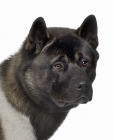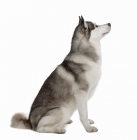Akita
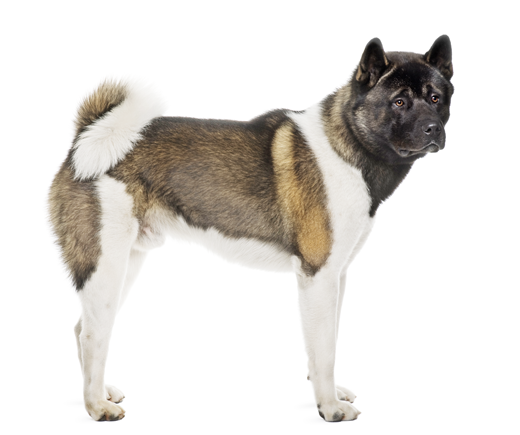
In my own words
My fluffy coat hides the fact that I’m muscly, strong and powerful. I might look like a cuddly toy, but I’m a large strong dog and I love nothing better than running, jumping and using up my energy. If you like to hike then I’d love to go with you – I can handle all kinds of terrain and I can walk and walk for hours!
Once we’ve worn ourselves out, we can have a good cuddle and relax at home. Sure, I might be big and bossy, but who doesn’t love a belly rub?
I should warn you though – I can be a bit moody. I have a short fuse and I’m not going to lie; I just don’t like other dogs. I suppose I can cope being in a family with one other dog, but I really can’t handle more than that. But hey, why do you need other dogs when you have me?
My ideal owner(s)
Experienced dog owners
A-type personalities
Families
People who are very active
Hikers and ramblers
What they say about me
Affectionate and loving
Fearless
Independent
Cat like
Highly protective
Please read on to find out more about me, and whether I’ll be someone you’ll be happy to live with for the next 14 years!
Is this Akita for you?
Test your knowledge about the Akita
Information essential about the Akita
Kennel Club Group:
Utility
Size:
Large: Weight Male 75 – 110 lb (34 – 50 kg) Female 75 – 110 lb (34 – 50 kg
Height Male 26 – 28” (66 – 71 cm) Female 24 – 26” (61 – 66 cm)
Popularity:
The Akita is considered a national treasure in its native country of Japan, where it is thought to be a sign of wealth and prosperity. The Akita is also popular further afield, particularly in America, where the American Akita variety is sometimes used as a police or military dog.
Breed History:
The Akita is the largest breed of Japanese dog, Originating from Japan’s Akita province in the 1600s, the Akita was bred to hunt to game such as deer, wild boar and black bears, which gives some idea of the power behind the Akita. Some experts even believe that the Akita was specifically bred for pit fighting but when the sport of dog fighting lost popularity in Japan, the dogs were put to work as a hunting breed.
When the German Shepherd and Pointer were imported into Japan in the late 1800s, many native Japanese breeds suffered in popularity including the Akita. In addition, a large outbreak of rabies almost wiped out the Akita. The Society for Preservation of Japanese Dogs was formed in order to work to preserve the Japanese breeds.
During World War II, the Akita once again came close to extinction as many of the dogs were killed for their meat and fur. However, after the war the breed was re-established in Japan and much further afield as American officers and soldiers brought many Akitas back to the United States with them.
When brought to North America, the dogs were bred to be much larger, heavy boned and with a larger head. This variety of the breed is known as the American Akita and has loosely curled tail, loose skin, black mask and black markings. The Japanese Akita and American Akita are now considered to be different breeds. The Japanese Akita is smaller with a foxy look and white, red and brindle coloured coats.
Character:
The Akita isn’t like other hounds and sporting dogs as it wasn’t bred to live and work in a pack. Therefore, it is happiest as the only dog in the household or one of just two dogs in a family. Your Akita can show a lot of aggression towards dogs and other animals which are not part of his family and his hunting instinct means that he should not be trusted around smaller non-canine animals. Your Akita will be totally devoted to his family and will adore receiving your attention and affection. They are very protective over children in the family, but wary of children and people outside the family unit. As your Akita is very territorial and protective of their families, they make excellent guard and watch dogs. They are wonderfully alert and always taking in their surroundings. Your Akita is a large dog with a lot of energy, so will be happiest when well exercised on a daily basis. However, the issue this breed has with dog aggression means they should not be allowed off leash.
Temperament:
Your Akita is a powerful and dominant breed of dog and very intelligent. Akita owners must show strength, an air of authority and confidence around their Akita at all times to ensure that they do not become bossy or think that they rule the household. A well behaved Akita is one which is relaxed, well exercised and knows his place in the family. Though they need firm obedience training, they must not be trained using harsh or heavy handed methods. Consistent, positive training is the best way to make your Akita polite and well balanced. When your Akita is happy and content he will be affectionate, loving and faithful, making him a lovely family pet. The Akita’s temperament can be compared to that of a cat’s – he can think for himself and will show independence as well as being incredibly clean. It is not unusual for your Akita to clean his face after eating.
Conformation:
The Akita has a large, strong and muscular frame. The head is large, long and flat with a broad forehead. The jaw should be powerful and meet in a scissor bite. The eyes are comparatively small, dark brown and almond shaped while the ears are small and triangular, carried erect over the eyes and rounded at the tips. The thick, muscled neck is short and reaches similarly strong shoulders with right elbows. The forelegs are straight and the hindquarters show well developed thighs. The feet are large, thick and tight. The Akita’s tail should be large, full and set high, carried in a signature curl over the back. The Akita has a double coat which is a medium length. The inner coat is soft and dense while the outer coat is coarser and longer.
Colour:
The Akita’s coat comes in any colour, but the most common shades are white, pinto and brindle.
Training:
The Akita is not well suited to inexperienced dog owners as these large dogs can be bossy, stubborn and even aggressive. Akitas are terribly dominant dogs and their owner must be firm yet also treat the Akita with love, respect and positivity. They must be trained from early puppyhood that they are not in charge and they also need intense socialisation from a very young age. Therefore, choose your breeder carefully when picking a puppy and be sure to ask the breeder what training and socialisation the puppy has had. An Akita with a submissive owner can be overpowering. Teaching your Akita that he is subordinate to you and the rest of your family is the first and most important step when it comes to training. Keep obedience training sessions fun and give him plenty of praise and love. You should never punish or be harsh with your Akita, so positive reinforcement is the only way to train this breed.
Care:
Your Akita’s coat should be brushed once every week with a comb and steel pin brush or a firm bristle brush. The coat doesn’t need to be trimmed or clipped and should be bathed only when necessary as it can damage the coat’s waterproof coating. The undercoat will shed or ‘blow’ once or twice per year and during this time it is a good idea to brush your Akita every day. This will both control and speed up the shedding process. Akitas which live indoors or in colder climates tend to shed less.
Health:
The Akita has an average lifespan of 12 to 14 years. They are generally a healthy breed, though they are susceptible to a few health conditions. Acquired Myathenia Gravis can occur in Akitas; this condition destroys proteins in the muscle surface where nerves are attached. Bloat, eye conditions and hip dysplasia are also issues for the Akita.
You may also like:
Akitas looking for a home in UK »
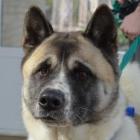

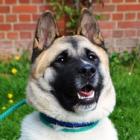
If you like Akitas, you may be interested in breeds of the same size »


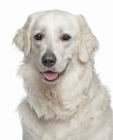
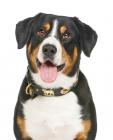
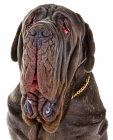
If you like Akitas, you may like other breeds with similar characteristics »

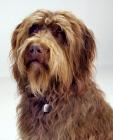
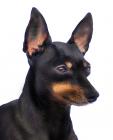

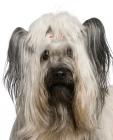
If you like Akitas, you may be interested in these other utility dogs »
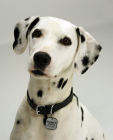
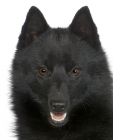

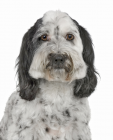

Advice on choosing your breed »
Find an animal shelter or rescue home where a Akita is waiting for a new home »
The following grid gives a fast track review which covers all breeds. You can apply it to help you decide if an Akita is suitable for you, the environment where you live, your personality and your lifestyle. On the grid, 1 = strongly disagree, and 5 = strongly agree. For example, if you are looking for a dog that you can take on long walks and hikes, look down the list under ‘activities’ and you will see that Akitas are wonderful walking companions, scoring 5. If you are looking for a dog that would make a good watch dog, look under ‘role and suitability’ and you’ll see an Akita would be an excellent choice, also scoring 5. You might like to save or print off this section and keep it for reference while you check some other breeds before making your choice.
Be the first to rate this breed »
|
*PLEASE NOTE: All our breed profiles are general, and all dogs are individuals. Always talk to the breeders and meet the owners you are buying from. Try to meet the dog and its parents if it is a puppy in their home environment.








